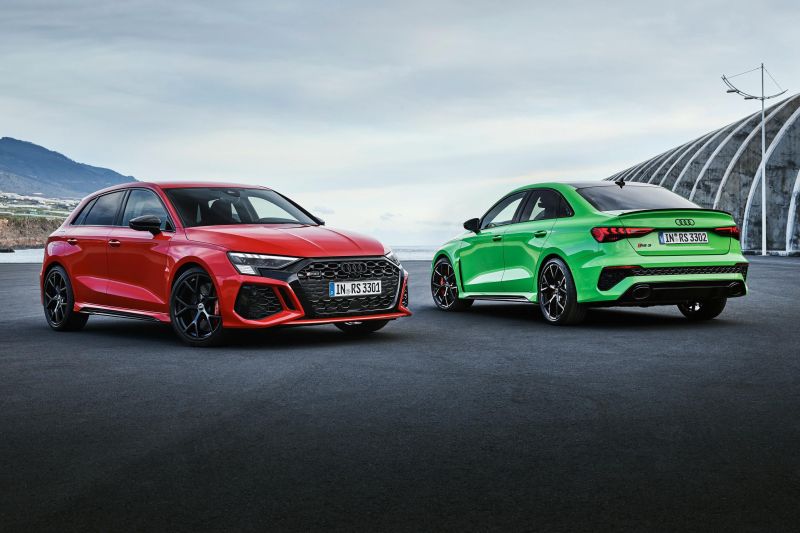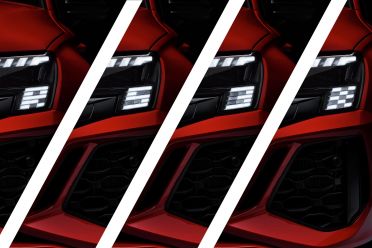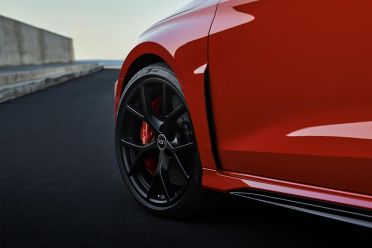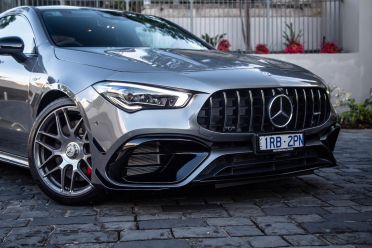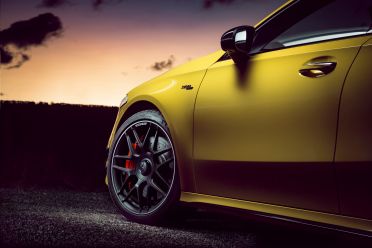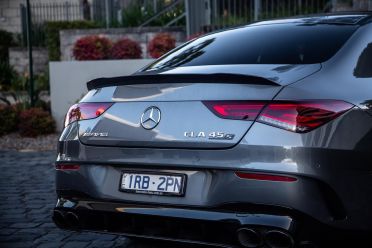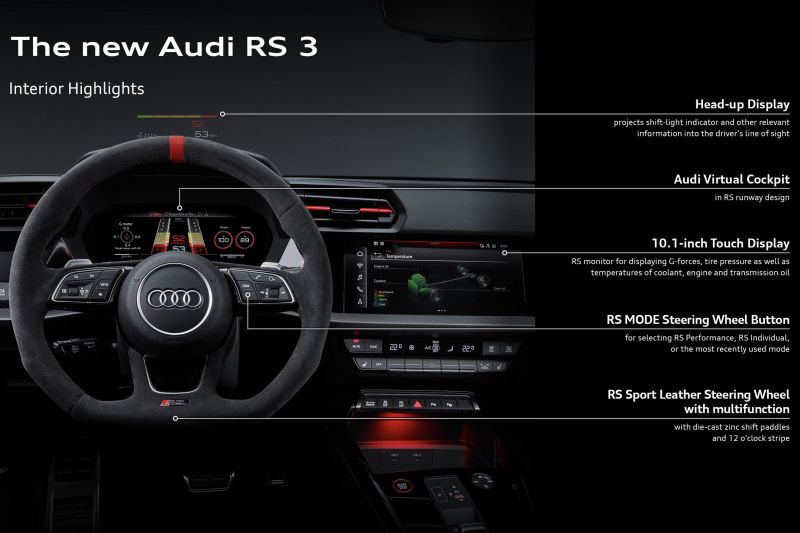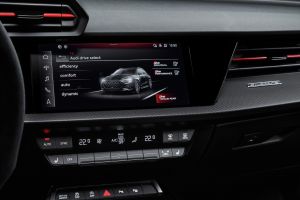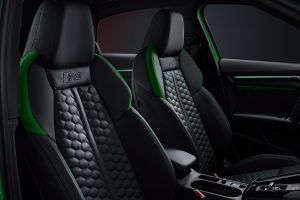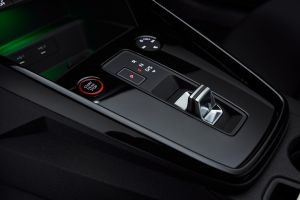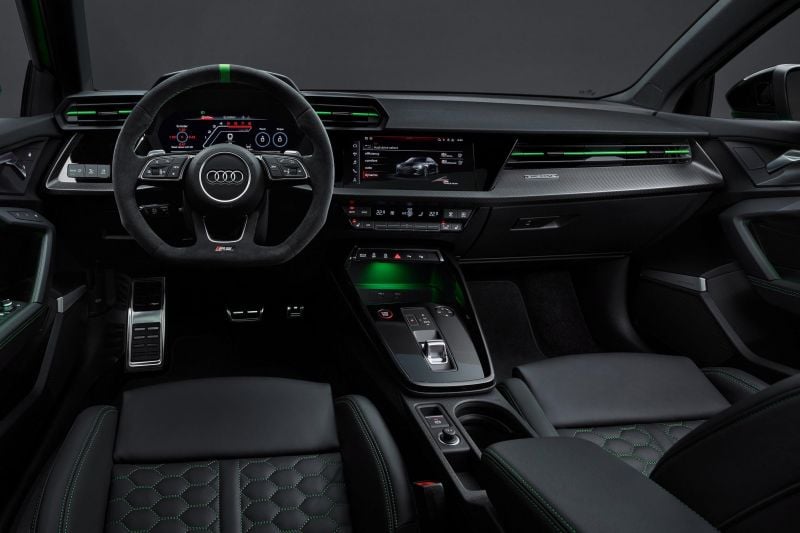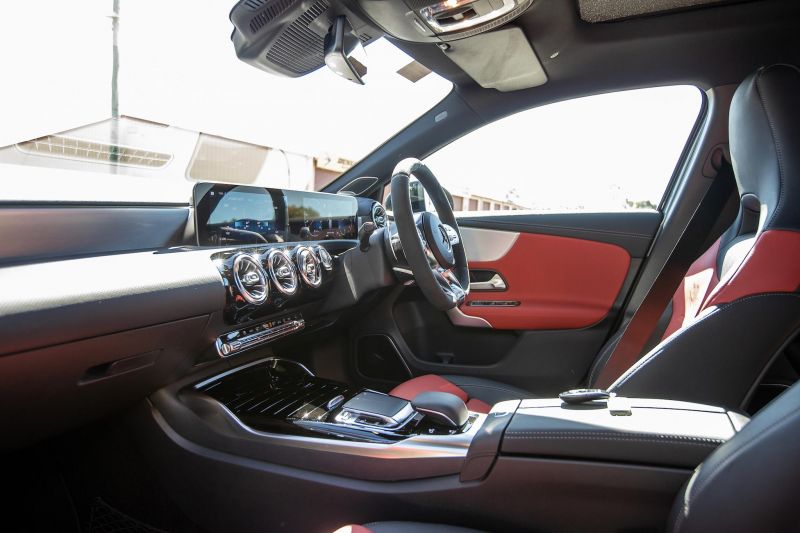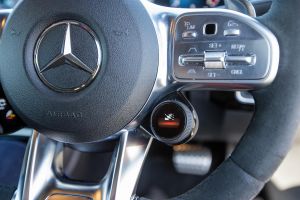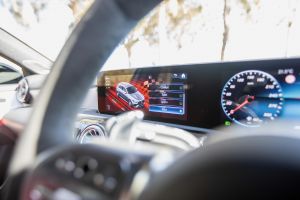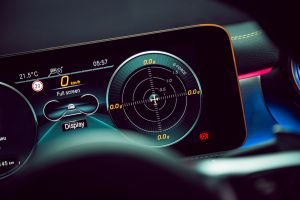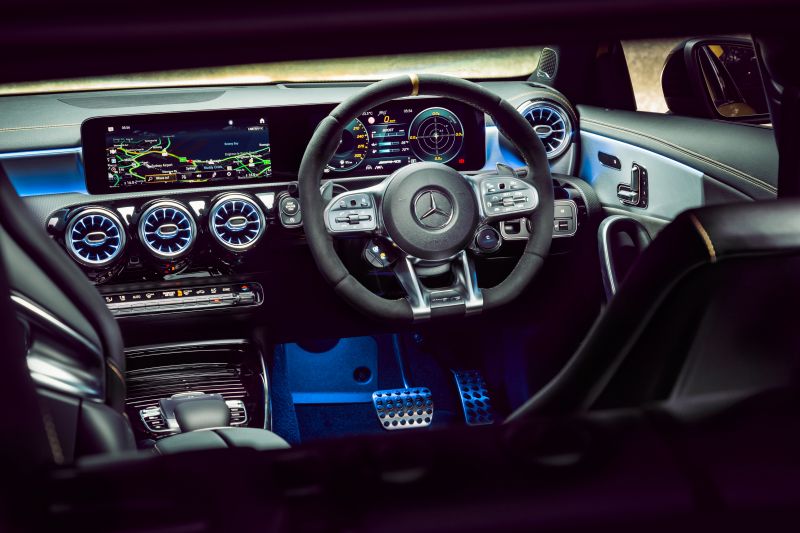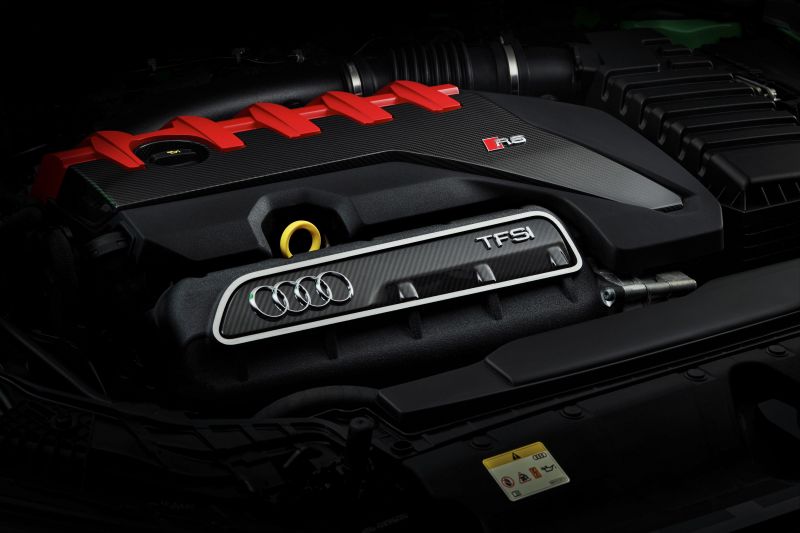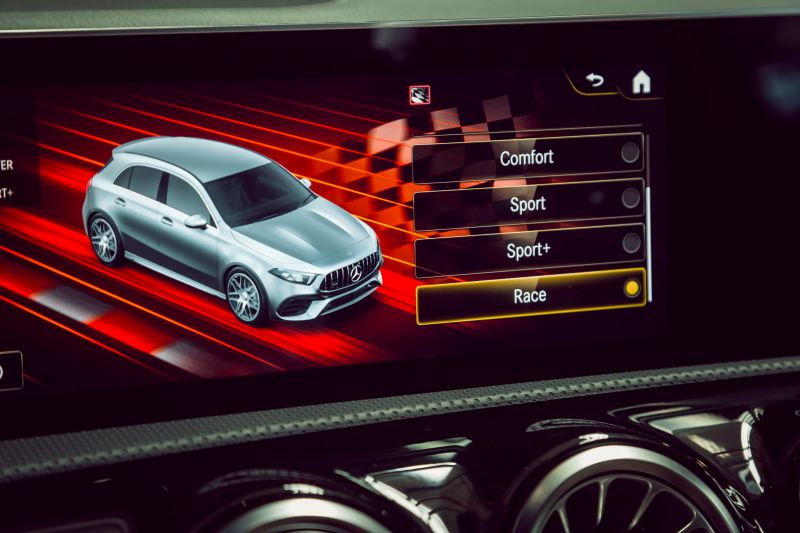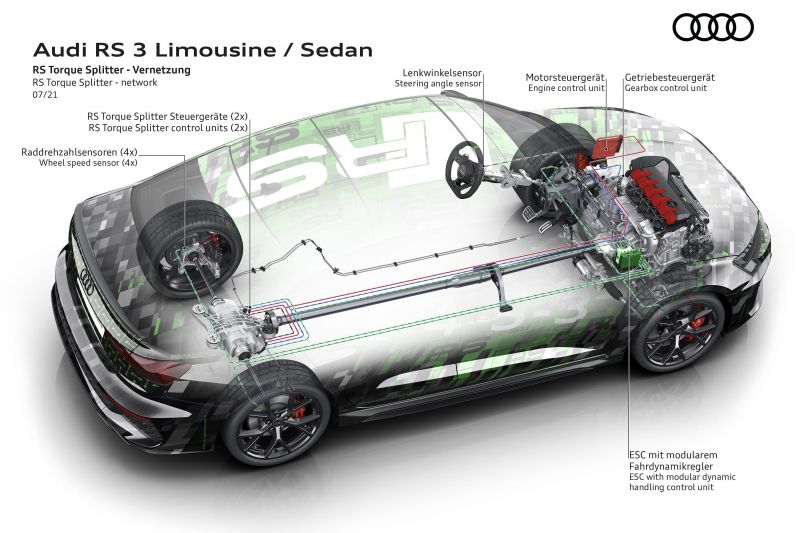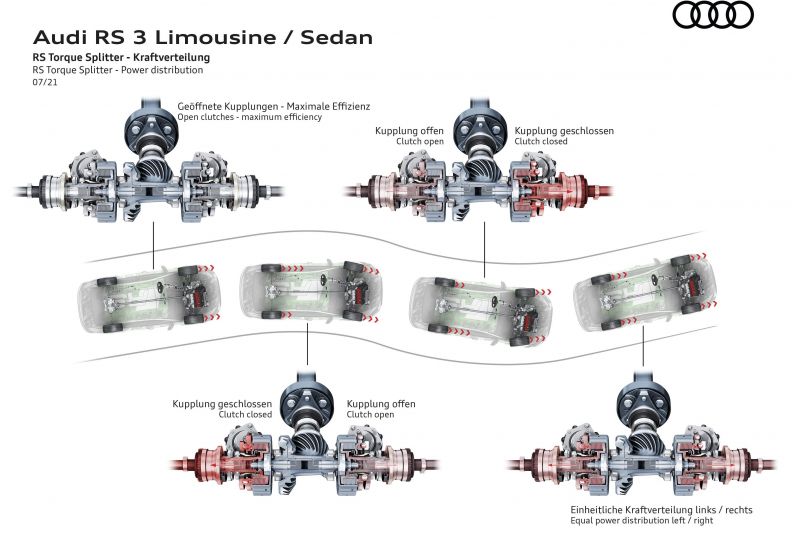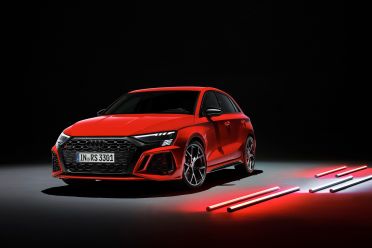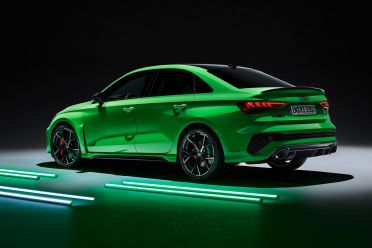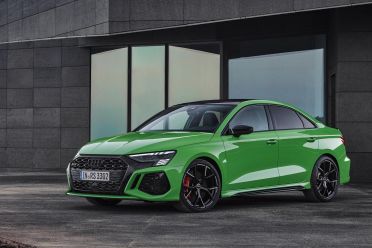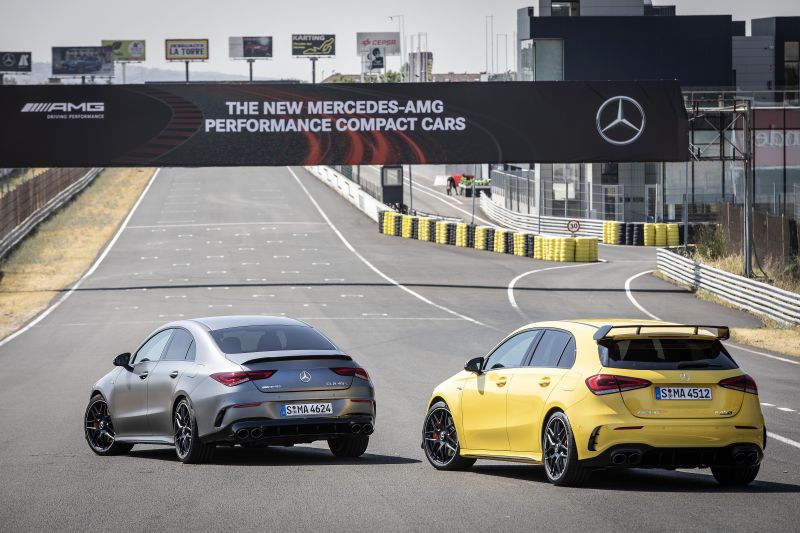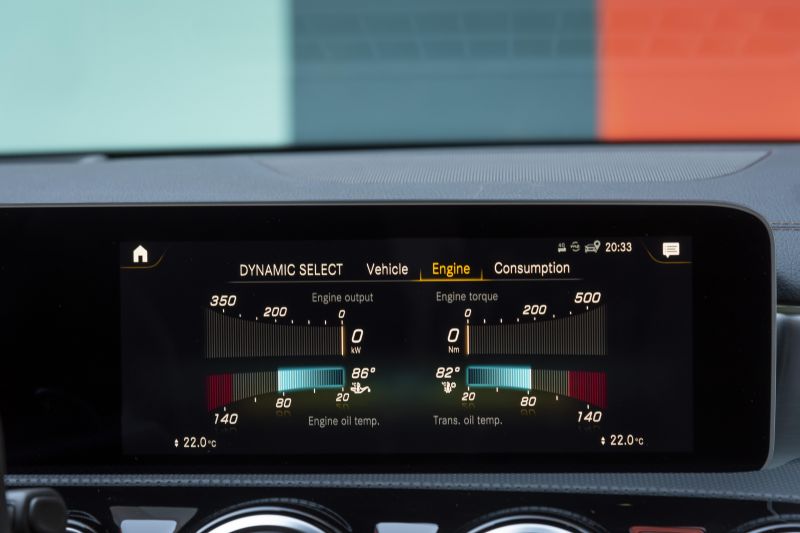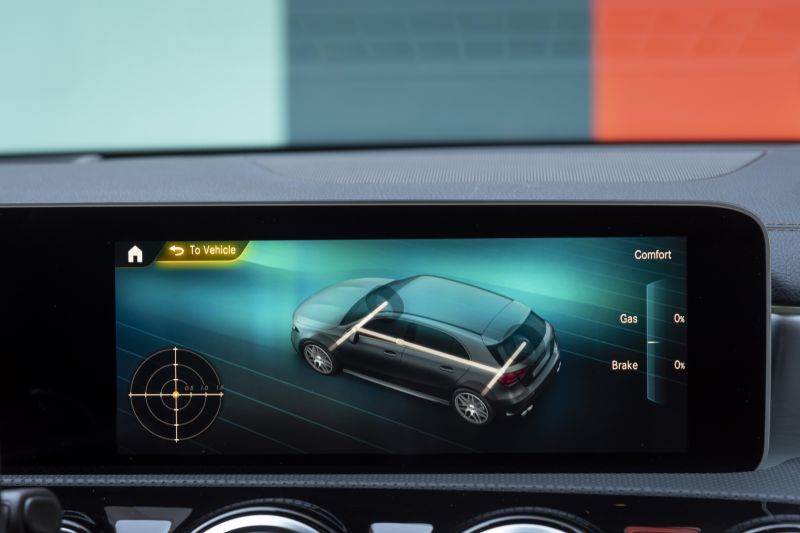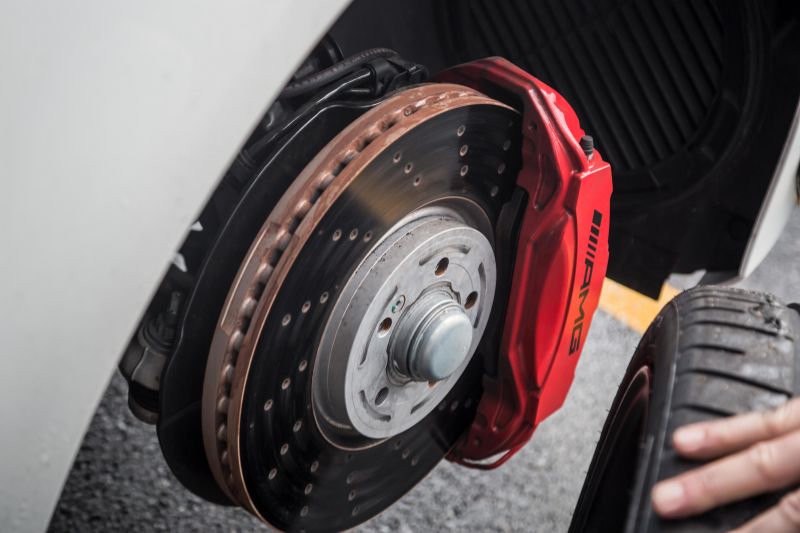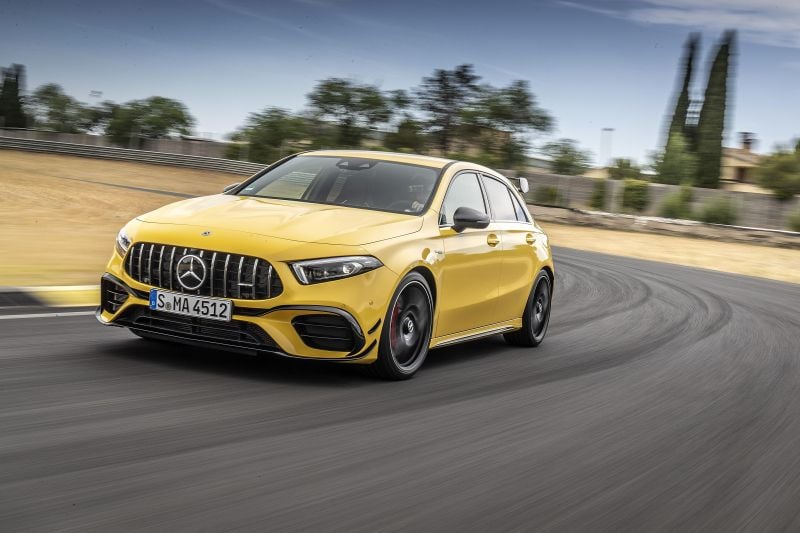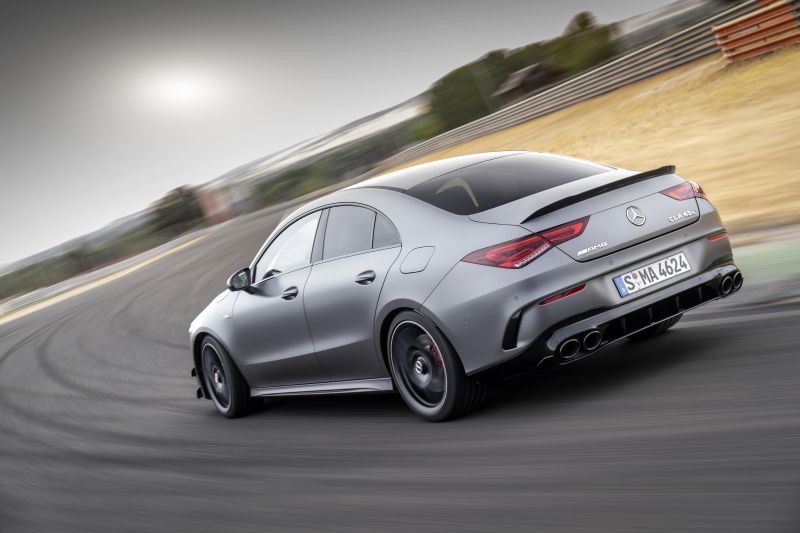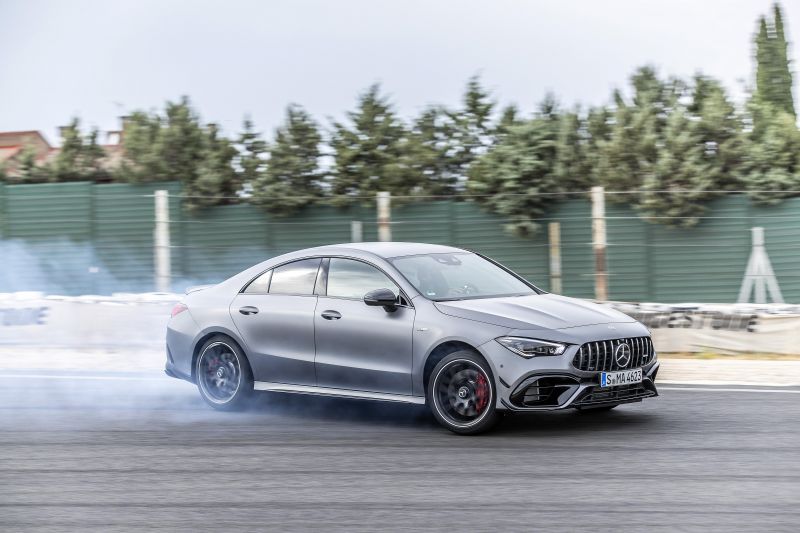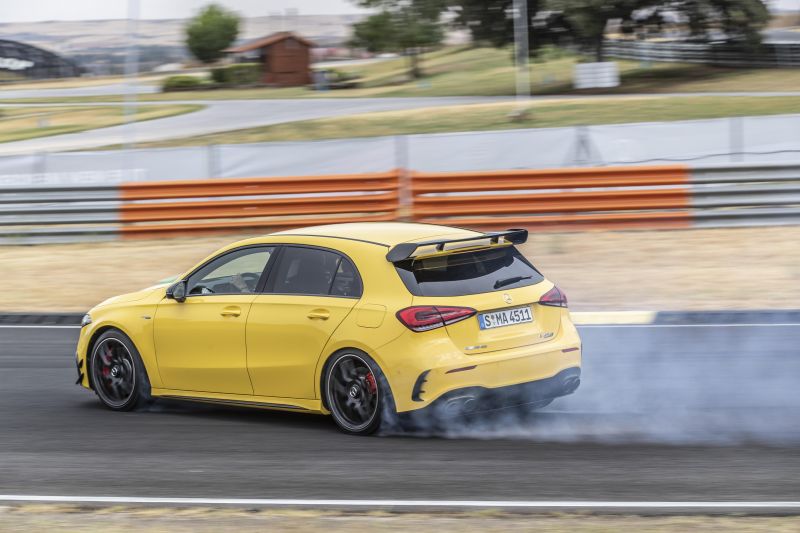Vehicles such as the Audi RS3, and Mercedes-AMG A45 S and CLA45 S, are what the term ‘pocket rocket’ was invented for.
They offer supercar-baiting performance in compact hatch and sedan body styles, though there’s little that’s humble about their pumped-up design add-ons.
Audi, Ingolstadt’s purveyor of iconic rally and GT cars, has crafted something special for what is likely the last non-electrified RS3.
Note: Slide the white line side to side to compare side profiles
Revealed this week, the new RS3 will arrive on Australian shores in the first half of 2022. Both hatch and sedan body styles are to be offered.
For all the character of its five-cylinder donk, and cleverness of its quattro all-wheel drive system, it’ll have to overcome its adversary from Affalterbach, which itself packs the world’s most potent four-pot.
The Mercedes-AMG models – A45 S being the hatch and CLA45 S the sedan – are already on sale in Australia, priced respectively at around $94,000 and $112,000 before on-road costs.
Whoever says German don’t do humour, has never set eyes on this trio… Or drifted them.
Designs
Audi
The RS3 looks angular and menacing. Up front there’s a huge single-frame grille (matte or gloss surround), sharp splitter, and big bold intake points.
The wheel arches are pumped up, Audi has fitted additional air outlets behind each front blister, and the front track is 33mm wider than before.
Matrix LED headlights have 3 x 5 LED segments and can even form a checkered-flag pattern or spell ‘RS3’, while the rear indicators scroll progressively.
The redesigned RS-specific rear bumper has an integrated diffuser and the RS exhaust system uses two large oval tailpipes.
Two unique colours called Kyalami Green and Kemora Grey (both named for circuits) have been created for the RS3. The sedan can be ordered with a contrasting black roof as well.
Mercedes-AMG
The Mercedes models have smoother and sleeker, less fussy designs than their predecessors, though they’re still menacing and have muscular proportions. The CLA also has awesome frameless doors.
There’s a clear difference in philosophies at play between (respective design chiefs) Gorden Wagener at Mercedes-Benz and Marc Lichte at Audi.
The power domes and flared arches, angry headlights, AMG-specific bumper and louvred grille grab you, as do the quad pipes and available stickers and wings in the AMG Aerodynamics Package.
There are a range of colours headlined at the bolder end by Sun Yellow flat, Denim Blue metallic, and designo patagonia red metallic.
Cabins
Audi
We’ve come to expect great interiors from Audi, and the RS3’s purposeful cabin definitely looks the part.
There are lots of angles, a distinct driver orientation, hints of race car, and bold LED lighting in different colours that pops off the charcoal colour palette and carbon-fibre instrument panel (option).
Behind the three-spoke flat-bottom leather wheel (with zinc paddles) sits a 12.3-inch digital instrument cluster that displays runway design mode, g‑forces, lap times and acceleration from 0‑100 km/h, 0-200km/h, and quarter-mile.
One screen view displays rpm in the form of a bar graph and shows power and torque delivery in percentages. There’s also a blinking shift indicator that changes from green to yellow to red in manual mode.
Above this is a head-up display showing travel data, and beside it sits a driver-facing 10.1-inch centre touchscreen. Along the centre tunnel is a shift-by-wire rocker switch-type transmission shifter.
The bucket seats can trimmed in Nappa leather with honeycomb stitching in bright colours, which can be matched to the seatbelt edging and vent accents. That’s a bit out of Mercedes-AMG’s playbook…
Mercedes-AMG
Mercedes-Benz’s latest interiors are bold, dominated by twin screens, brash colour palettes, and lashings of silver metallic trim pieces.
The driver’s instruments come in three AMG design styles, headlined by a Supersport mode with a centralised rev counter, and bar graph rev counter. A head-up display projects onto the windscreen.
The instrument screen shares a glass cover with the centre touchscreen infotainment system and houses the AMG Track Pace display, billed as a “virtual race engineer”.
The MBUX voice control system lets you control things like maps, audio, and temperature by saying “Hey Mercedes” and ordering it around.
The bucket seats can be had with brash yellow highlights, upholstered in Artico fake leather and Dinamica microfibre. There are 64 ambient lighting colours to choose from too.
The AMG Performance steering wheel has little physical toggles act as driving-mode adjustment shortcuts.
Drivetrains
Audi
The new RS3 retains the five-cylinder engine with which it has become synonymous. The 2.5-litre TFSI won an ‘International Engine of the Year’ gong nine years running.
The latest iteration makes 294kW of peak power between 5600rpm and 7000rpm, and 500Nm of torque between 2250rpm and 5600rpm.
In terms of noise-making it has a 1-2-4-5-3 ignition sequence and fully variable exhaust flap control.
Mated to the engine is a seven-speed dual-clutch automatic, which transits engine outputs to a variable quattro all-wheel drive setup. Audi claims a zero-100km/h capability of just 3.8 seconds.
A new engine control unit also increases the speed at which all of the drive components communicate with each other, Audi claims.
Regular RS3s have a top speed limited to 250km/h, which can be boosted to 280km/h with the RS Dynamic package. Add the optional ceramic brakes and that jumps to an Autobahn-crushing 290km/h.
Mercedes-AMG
The ballistic Benz totes the world’s most powerful series production four-cylinder engine, made under the company’s ‘One Man, One Engine’ principle on a swish new line at AMG HQ.
Australia only gets the A45 S model, producing 310kW of power at 6750rpm (16kW up on the RS3) and an RS3-matching 500Nm of torque, available at a high 5000 to 5250rpm. It also has exhaust flaps synced to drive modes.
AMG engineers use something called torque shaping to maximise torque at high engine speeds to somewhat mimic a naturally-aspirated engine. Torque graphs show that there’s still 450Nm from around 3500rpm.
Interestingly, the compressor and turbine shafts have roller bearings, like the 4.0-litre V8 used in the AMG GT 4-door. The roller bearings reduce mechanical friction within the 2.1 bar turbocharger to a minimum. Other friction-reducers include Nanoslide cylinder linings.
Mated to the engine is an eight-speed dual-clutch auto with paddles and launch control. The variable AWD system puts power down.
Mercedes-AMG claims a 0-100km/h time of 3.9 seconds – a tenth behind the Audi – and a 270km/h V-Max, and 4.0s for the CLA variant.
| Audi RS3 | Mercedes-AMG A45 S | |
|---|---|---|
| Displacement | 2.5-litre | 2.0-litre |
| Cylinders | Five | Four |
| Induction | Turbocharged | Turbocharged |
| Power | 294kW @ 5600 to 7000rpm | 310kW @ 6750rpm |
| Torque | 500Nm @ 2250 to 5600rpm | 500Nm @ 5000 to 5250rpm |
| Driven wheels | Variable AWD | Variable AWD |
| Transmission | 7-speed dual-clutch | 8-speed dual-clutch |
| 0-100km/h | 3.8 seconds | 3.9 seconds |
| Top speed | 290km/h | 270km/h |
Ride, handling and braking
Audi
Headline news is the RS brand-first torque splitter device, which works a little differently to a normal rear differential and clutch pack. It allows rapid variable torque vectoring along the rear axle, for example transmitting torque to the right rear wheel in lefthand curves.
In hardcore RS Torque Rear mode, all engine torque goes to whichever rear wheel sits on the outside of a curve, allowing controlled drifting. In an AWD hatchback or sedan…
The modular vehicle dynamics controller (mVDC) unit grabs data from all the components relevant to lateral dynamics, and syncs up the torque splitter, adaptive dampers, and wheel-selective torque control as neatly as possible.
Audi Sport has fitted new shocks and valves to the RS3, made bespoke.
The setup is “markedly stiff”, and the body 10mm lower than on the S3 and 25mm lower than on the A3.
Other enhancements to this model include larger negative wheel camber enabled by modified pivot bearings, and lower wishbones equipped with stiffer subframes and stabilisers. The four-link rear end has a tubular stabiliser bar.
There’s also adaptive damper control synced to the drive modes, and the brand claims there’s a “clearly perceptible spread of the shock absorber characteristics” between sport and comfort settings.
RS‑specific “progressive steering” varies the gear ratio depending on the steering angle, velocity, and driving mode selected.
Two remarkable options are Pirelli P Zero Trofeo R performance semi-slick tires, and front axle ceramic brakes that cut weight and cool faster, over the standard six-piston steel brakes.
To unlock the 290km/h top speed you need to tick this box.
Mercedes-AMG
The Mercedes-AMG uses a variable electromechanical AWD system with torque vectoring that yields similar results to the drift-happy Audi.
Influencing factors for torque distribution front to rear are not simply the driving speed, the lateral and longitudinal acceleration and the steering angle, but also the difference in rotational speed between the individual wheels, the gear selected, and even the accelerator position.
If you want to see it driven hard, check out our A45 S track review written by rally ace Chris Atkinson here.
Power can be further split across the rear axle through two rear-wheel driveshaft-mounted (electronically actuated) multi-disc clutches – unlocking a drift mode too, with the ESP off.
The vehicle’s stability control brakes the inner rear wheel to generate a defined yawing motion around the vertical axis. Again, to make the car feel as alive and non-AWD-like (one might say) as possible.
The MacPherson strut front axle suspension with a single aluminium wishbone below the wheel centre, a spring strut, and a tie-rod. At the rear there’s a four-link setup connected to the body via the most torsionally rigid carrier achievable.
AMG Ride Control adaptive dampers give you three suspension control modes of varying stiffness (rapidity of damper responses) that happens at each wheel individually, in milliseconds as determined by the control unit.
The electromechanical steering has a variable ratio like the Audi, controlled in this case by velocity and driving mode selected.
Steel braking for AMG 45 S models comes via six-piston fixed-caliper-toting front discs measuring 360mm in diameter, plus single-piston floating caliopers on 330mm discs at the rear.
Mercedes-AMG has certified Pirelli P-Zero Trofeo R semi-slick tyres as an M01 specification hoop that matches the dimensions, load and speed ratings of the current Michelin Pilot Sport 4S factory-fitted tyre.
MORE: Mercedes-AMG A45 S showroom page
MORE: Mercedes-AMG CLA45 S showroom page
MORE: Mercedes-AMG A45 S Pirelli tyre option slashes lap times
MORE: Audi RS3 showroom page
MORE: 2022 Audi RS3 swaps Haldex for RS Torque Splitter

